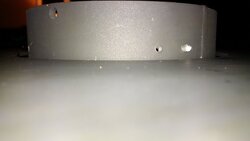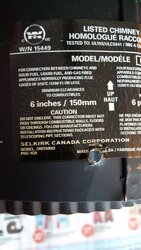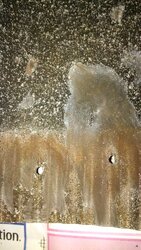kf6hap
Minister of Fire
BKVP told me to check the draft in hi/medium burn
, that's where I am seeing -.15. If I close down my thermostat control it goes emediately to -.20/-.21, even with key damper closed as much as possible !!
Pressure will drop across a resistance with flow. No flow=no pressure drop. Low flow=low pressure drop. At high fire, a lot of pressure drop will exist. Because the damper has excessive leakage at full closure the ability to cause pressure drop is lost. For those of you who know electrical, this is Ohm's law: E=I X R.
The vacuum (draw) numbers given the manuals do not make any sense to me as draw= temperature differential X height. Draw is given by physics. In the real world the R value has a profound effect on draw but the physics remain, they are inalterable. This being said, normal chimney heights will put your stove draw out of range. With proper chimney materials, every time. No exceptions, unless the chimney is extremely tall and sucks all the heat out of the flue gasses.
I could be wrong, but with all my studies, the above appears to be the case." Over tall" chimneys don't seem to have any ill effects save somewhat shortened burn times. Stove "runaway" is eliminated by the thermostatic control. Others might chime in about very tall bad chimney effects.
, that's where I am seeing -.15. If I close down my thermostat control it goes emediately to -.20/-.21, even with key damper closed as much as possible !!
Pressure will drop across a resistance with flow. No flow=no pressure drop. Low flow=low pressure drop. At high fire, a lot of pressure drop will exist. Because the damper has excessive leakage at full closure the ability to cause pressure drop is lost. For those of you who know electrical, this is Ohm's law: E=I X R.
The vacuum (draw) numbers given the manuals do not make any sense to me as draw= temperature differential X height. Draw is given by physics. In the real world the R value has a profound effect on draw but the physics remain, they are inalterable. This being said, normal chimney heights will put your stove draw out of range. With proper chimney materials, every time. No exceptions, unless the chimney is extremely tall and sucks all the heat out of the flue gasses.
I could be wrong, but with all my studies, the above appears to be the case." Over tall" chimneys don't seem to have any ill effects save somewhat shortened burn times. Stove "runaway" is eliminated by the thermostatic control. Others might chime in about very tall bad chimney effects.





